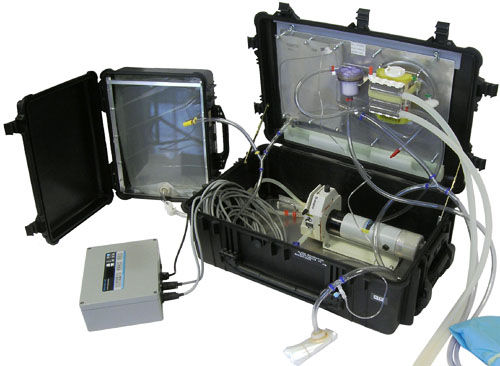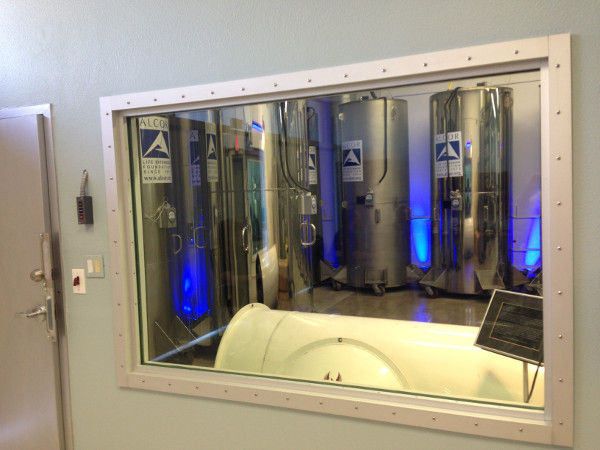Human Cryogenics - Death Cheating?
- ckled127
- Nov 7, 2015
- 3 min read
Normally, when someone dies, they will be cremated or buried. But now with the development of science and technology, instead of accepting a person's permanent leave, the relatives can apply for their dead family member to be 'vitrificated'. It is called Cryonic (or Cryopreservation). By using ultra-cold temperature to preserve human life with the intent of restoring good health, those lives may be resurrected when technology is advanced enough to do so.
Death is the termination of all biological functions that sustain a living organism. Bodies of living organisms begin to decompose shortly after death. Death cannot be stopped permanently. However this idea is challenged by the Alcor organisation in Arizona. The Alcor Life Extension Foundation is the world leader in cryonics, cryonics research, and cryonics technology.
Cryonic Procedure
The purpose of cryonics is to preserve life. Alcor therefore intervenes in the dying process at the earliest moment that is legally possible. If proper procedures are followed immediately after the heart stops, then legal death need not impact the biology of cryonics or its prospects for success.
As a dying patient's condition becomes critical, Alcor personnel wait nearby on a 24-hour basis. This is called "standby." When the heart stops beating, an independent nurse or physician pronounces legal death, and the Alcor team begins life support procedures as described below.
-Stabilization: The patient is placed in an ice water bath, and blood circulation and breathing are artificially restored by a heart-lung resuscitator (HLR). The HLR, or "thumper," is a mechanical device used in emergency medicine to perform CPR. In cryonics, the term CPS (cardiopulmonary support) is used instead of CPR because the intent is to provide life support, not cardiac resuscitation. Because cryonics patients are legally deceased, Alcor can use methods that are not yet approved for conventional medical use. This enables Alcor to use new technologies that can support the brain longer and more effectively than traditional CPR
-Transport: This step is assisted with Alcor's Air Transportable Perfusion kit (ATP), shown in the photo below. This kit reduces the patient's temperature to a few degrees above the freezing point of water. Blood is also replaced with an organ preservation solution that is specially designed to support life at low temperature. If the patient is located outside of Arizona, they are packed in ice for air shipment to Alcor's facility in Scottsdale, Arizona.

Remarkably, studies show that whole animals can survive up to three hours of cold storage on ice using existing medical technology. Even longer periods can be survived if the preservation solution is continuously circulated.
-Cryoprotective Perfusion: A base perfusate similar to the preservation solution used during transport is circulated through the patient at a temperature near 0°C (the freezing point of water) for several minutes. This washes out any remaining blood. The cryoprotectant concentration is then linearly increased. This solution has been specifically validated for structural preservation of the brain. Temperature, pressure, and cryoprotectant concentration data are continuously monitored and acquired by computer.
-Cooling: After cryoprotective perfusion, patients are cooled under computer control by fans circulating nitrogen gas at a temperature near -125°C. The goal is to cool all parts of the patient below -124°C (the glass transition temperature) as quickly as possible to avoid any ice formation. This requires approximately three hours, at the end of which the patient will have "vitrified" (reached a stable ice-free state). The patient is then further cooled to -196°C over approximately two weeks. Patients are monitored by sensitive "crackphone" instruments during this long cooling period to detect fracturing events that tend to occur when large objects are cooled below the glass transition temperature.
-Long-term Care: Currently Alcor patients are stored under liquid nitrogen at a temperature of -196°C. The liquid nitrogen is held in vacuum-insulated dewars that require replenishment every few weeks. Liquid nitrogen is used because it is inexpensive and reliable. Finally, the bodies are placed head upside-down in the freezer cylinder

Alcor in Society
-Before conducting the election for USA President Position, Zoltan Istvan also registered service define this winter with hopes that many people know this better service because this is an industry that has the ability to change people's lives.
-The federal government recently awarded $1.3 million dollars to specifically study the problem of fracturing during cryopreservation.
























Comments